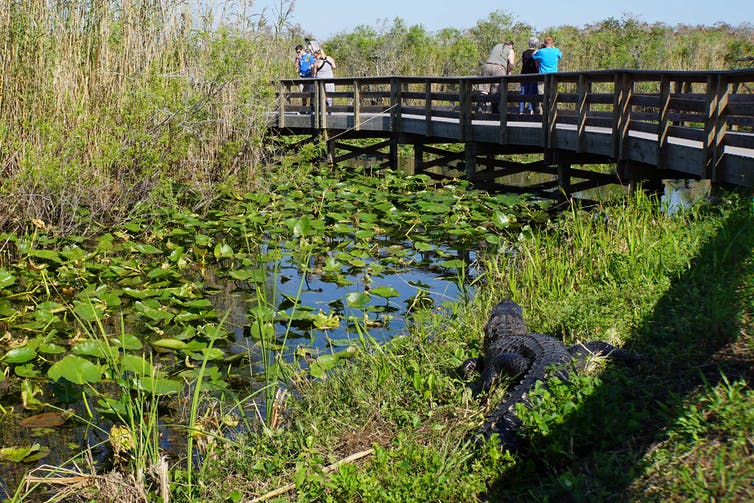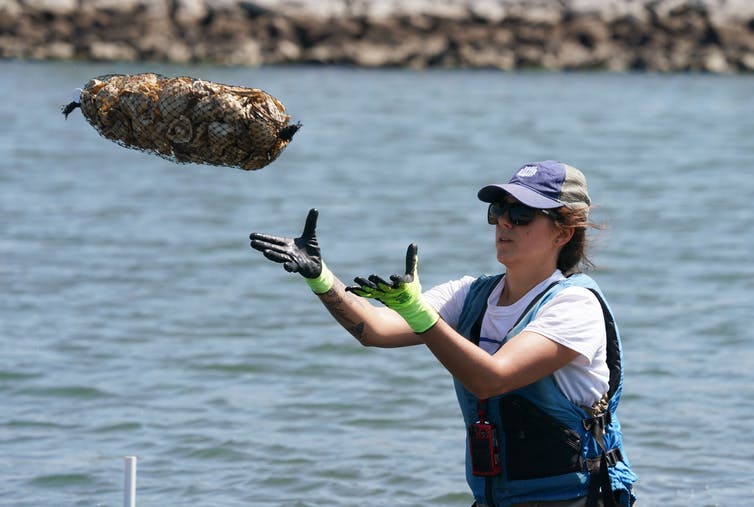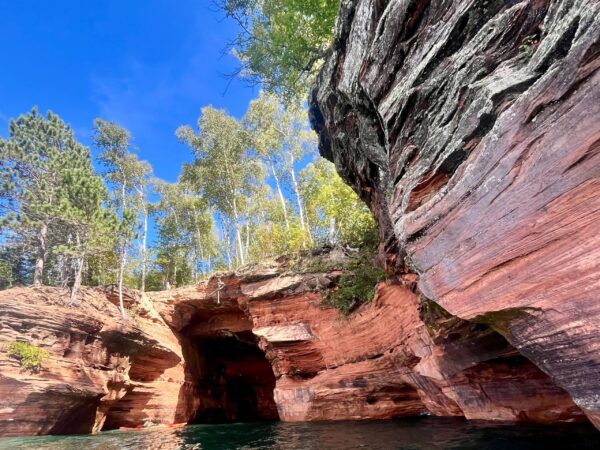
By , Colorado State University, The Conversation
![]() is an independent and nonprofit source of news, analysis and commentary from academic experts.
is an independent and nonprofit source of news, analysis and commentary from academic experts.
Modern society benefits when people understand science concepts. This knowledge helps explain how cryptocurrency works, why climate change is happening or how the coronavirus is transmitted from person to person.
Yet the average American spends less than 5% of their lifetime in classrooms learning about such topics. So, besides school, where else can people go to study and explore science?
Museums, zoos and libraries are certainly a great start. As a researcher of adult STEM education, I study less conventional ways for people of all ages to learn and participate in science.
Here are four alternative venues where the general public can enjoy nature, engage in hands-on science learning and get a behind-the-scenes look at scientific research in action.
1. National parks
Visitors to national parks dramatically increased over the past two years as the pandemic inspired people to go outside and enjoy nature more regularly. However, people often don’t realize that many parks offer lecture series, nature walks and interactive science learning opportunities for those interested in adding an extra layer of scientific and environmental knowledge to their outdoor experience.
For example, Grand Canyon National Park in Arizona offers Ranger Programs that teach the public about ongoing changes to the canyon from weathering and erosion. Great Smoky Mountains National Park, which spans Tennessee and North Carolina, offers its own education programming but also partners with local groups to offer guided nature hikes or trail-building volunteer opportunities.
For those who don’t wish to venture into the great outdoors, the National Parks Service has a variety of online resources, such as virtual park visits and webcams that present real-time views of weather, dramatic scenery, wildlife and more.
Find your nearest national park here.

Many national parks offer nature walks, lecture series and other science activities. (Photo Credit: Leila Macor/AFP via Getty Images)
2. University extension programs
Land-grant universities are charged with translating and delivering scientific research to the public and exist in every U.S. state and territory.
They often do this through what’s called “extension” programs. Master Gardener is a popular one, but there are many unique local options, too. For example, Colorado State University offers a Native Bee Watch program that trains volunteers to identify and monitor bees in their backyards or local natural areas. An extension program at University of Minnesota teaches volunteers how to detect aquatic invasive species in local rivers and lakes.
3. Biological field stations
Biological field stations are usually associated with universities or other research institutions. While scientific and environmental research is the primary focus, many field stations provide programs for adult learners, as well as opportunities to interact directly with scientists.
Field stations tend to be in more rural areas, where there are fewer zoos, museums, aquariums and other science-learning venues. Yet nearly 80% of the U.S. population lives within an hour’s drive of a biological field station. This map can help you identify one near you.
The W.K. Kellogg Biological Station in Michigan has a bird sanctuary that offers adult courses on botany, ornithology and nature drawing, as well as volunteer opportunities. There’s also a dairy center that hosts open-house events where visitors can learn about cutting-edge dairy management and research.
For learners who want to get involved in the scientific process, engage in a longer-term experience or participate as a family, Mohonk Preserve in upstate New York enlists volunteers to monitor bird activity and habitats, record the seasonal changes in plants and engage in other activities.

Biologists and volunteers in Brooklyn, New York, plant an oyster reef to clean a local waterway. (Photo Credit: Don Emmert/AFP via Getty Images)
4. Marine labs
Marine laboratories are similar to biological field stations but are typically located on coasts or other water bodies.
Harbor Branch Oceanographic Institute in Florida allows visitors to tour its research facilities and equipment, including an up-close view of its underwater vehicle. It also offers citizen science programs and a weekly lecture series on all things related to ocean science.
In Alaska, the Behind the Scenes program provides adults a look at the skills and science of running the Sitka Sound Science Center, like monitoring the genetic interaction of wild and hatchery salmon. Its feature event, the Sitka WhaleFest, includes wildlife cruises guided by scientists, science lectures and storytelling. For learners worldwide, the center hosts a podcast and offers recorded lessons on how to say the names of local animals in Tlingit, the language of the Sitka tribe.
As people continue to reap the mental and physical benefits of spending more time outdoors, I believe it’s important to mitigate any harm this extra activity may have on the environment. These four venues can help anyone learn more about the science behind natural spaces and also how to help preserve them.
Catch more news on Great Lakes Now:
Citizen Science Opportunities: How can you get involved in scientific research?
Public Resource: Around the Great Lakes, everyday people help make science possible
Featured image: Many national parks offer lecture series, nature walks and hands-on science projects for the public. fstop123/E+ Collection via Getty Images




